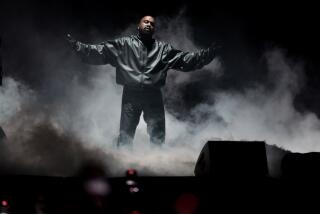Workers’ Lawyer Tells of ‘Clouds of Vapors’
- Share via
Lockheed workers were exposed to “clouds of vapors” while building the Stealth fighter because chemical suppliers failed to warn them of their products’ risks, causing health problems ranging from rashes to cancer, a lawyer for the workers told a jury Monday.
Thomas V. Girardi, representing the Lockheed employees, said during opening statements in the final phase of the marathon retrial that it was not unusual for a worker to pass out at the end of the day as a result of being exposed to the vapors.
Girardi’s statements started the second phase of a retrial in a chemical-exposure lawsuit in Los Angeles Superior Court.
After three weeks of deliberations, jurors last Tuesday ruled that Lockheed workers could proceed with injury claims against 10 of 20 chemical firms that were found to be negligent for failing to provide adequate warnings about the health risks of their products.
In the final phase of the trial that began Monday, jurors must determine if the workers were exposed and, as a result, harmed by the chemicals supplied by the 10 companies and if inadequate warnings were to blame.
Damages--if any are required--will also be determined in this phase. The 3-month-old trial stems from claims by more than 600 Lockheed workers and involves dozens of chemicals and solvents used to build the Stealth fighter during the 1970s and 1980s at the Burbank complex.
Laurence F. Janssen, an attorney representing industry giants Ashland and Du Pont, told jurors during his opening statements that evidence will show that none of the workers suffered from exposure, much less injury or damages, as a result of his clients’ products.
Instead, Janssen contended that the workers never saw the safety data sheets that accompany shipments of products and provide warnings of their risks because Lockheed never provided the data, and intimidated workers who asked about them.
Defense attorneys for the chemical companies have contended that Lockheed is among the world’s most sophisticated users of chemicals and was responsible for the safety of its workers.
But Girardi told jurors that the chemical companies and Lockheed shared responsibility for the inadequate warnings and that like Lockheed, the chemical companies should compensate the workers for damages.
“Everybody that’s responsible should pay for their share,” Girardi said.
Lockheed was dismissed as a defendant shortly before the original trial began after agreeing to settle for $33 million, paying each plaintiff about $37,500.
The Lockheed settlement had not been disclosed to jurors until Monday’s proceedings.
The settlement included higher payments of about $120,000 each for an estimated 58 workers who are alleged to have developed cancer or to have died as a result of their exposure to the chemicals, Girardi said in an interview after the court had recessed.
The original trial lasted eight months and ended in a mistrial last year after 12 weeks of jury deliberations. The two-part retrial is an attempt to simplify the procedures for the jurors in an effort to avoid a repeat of the first trial.
More to Read
Inside the business of entertainment
The Wide Shot brings you news, analysis and insights on everything from streaming wars to production — and what it all means for the future.
You may occasionally receive promotional content from the Los Angeles Times.









